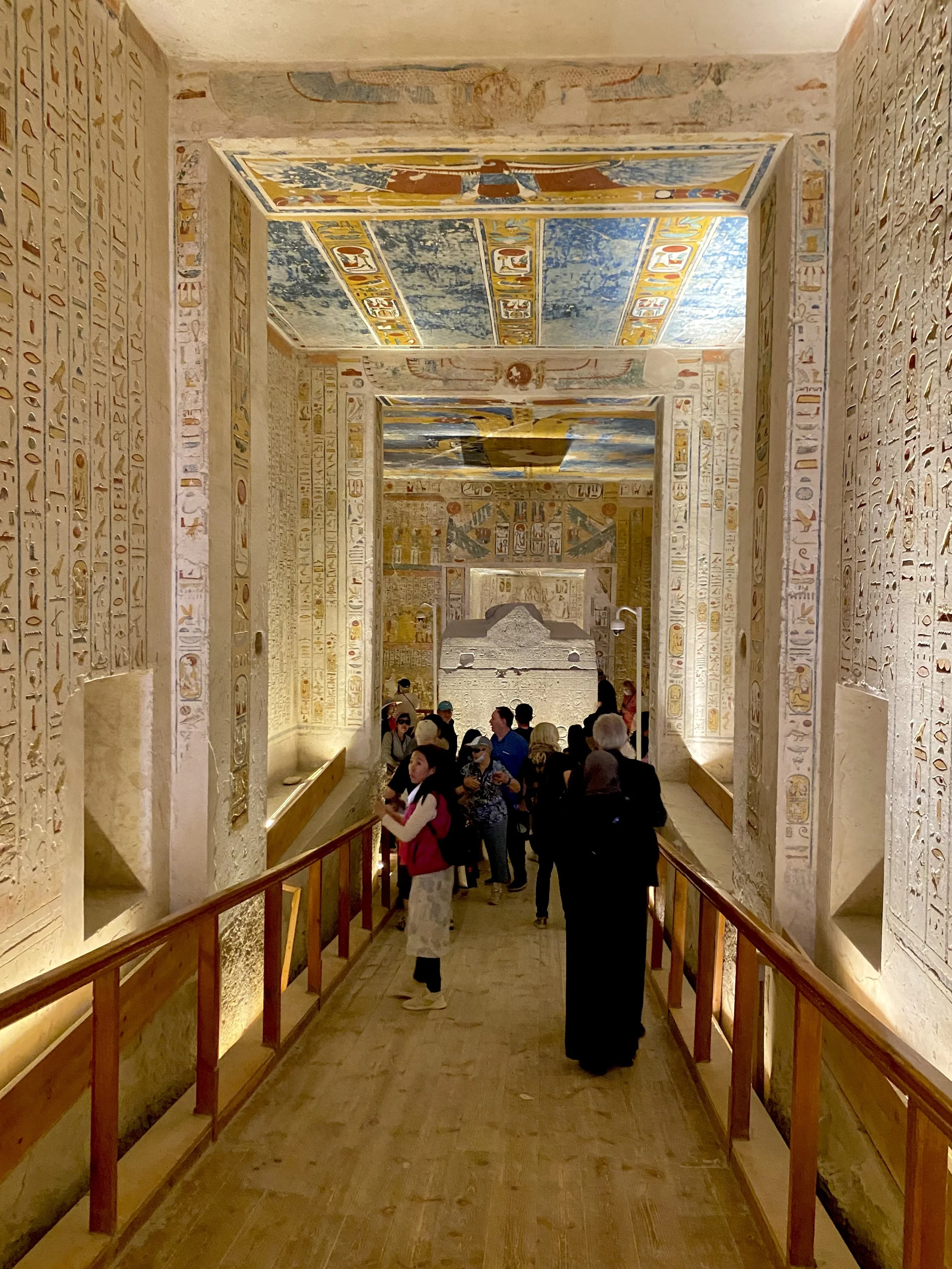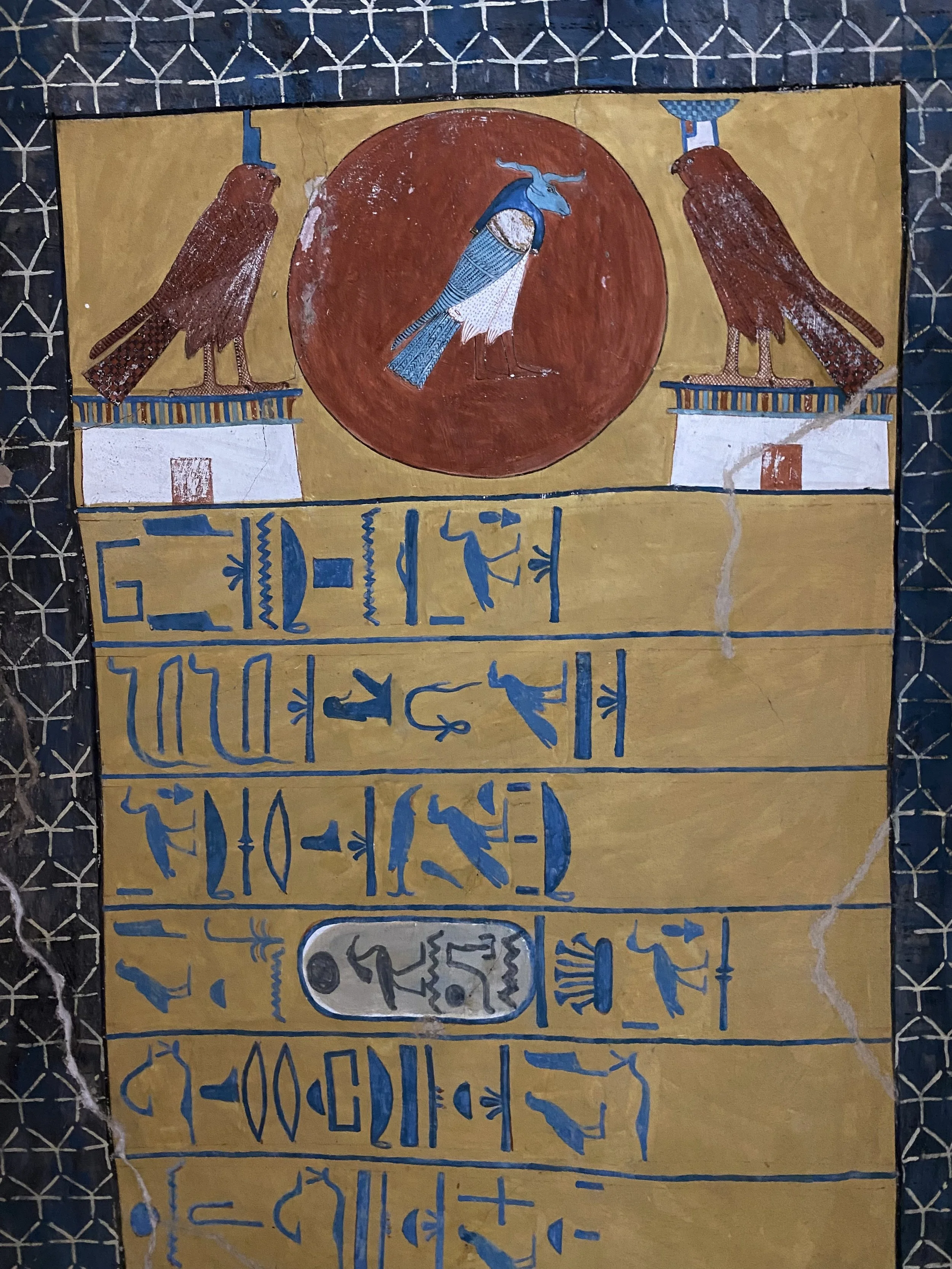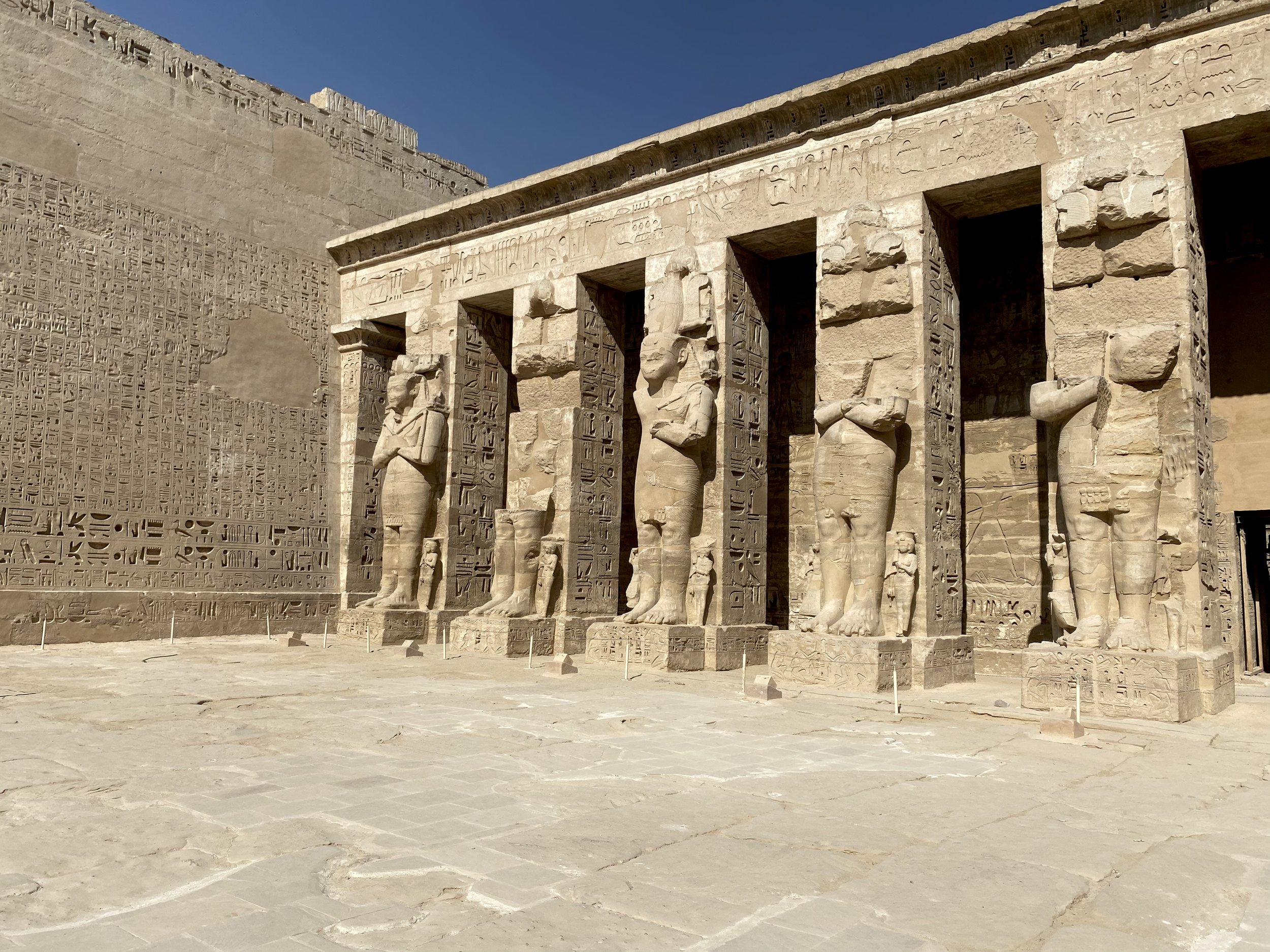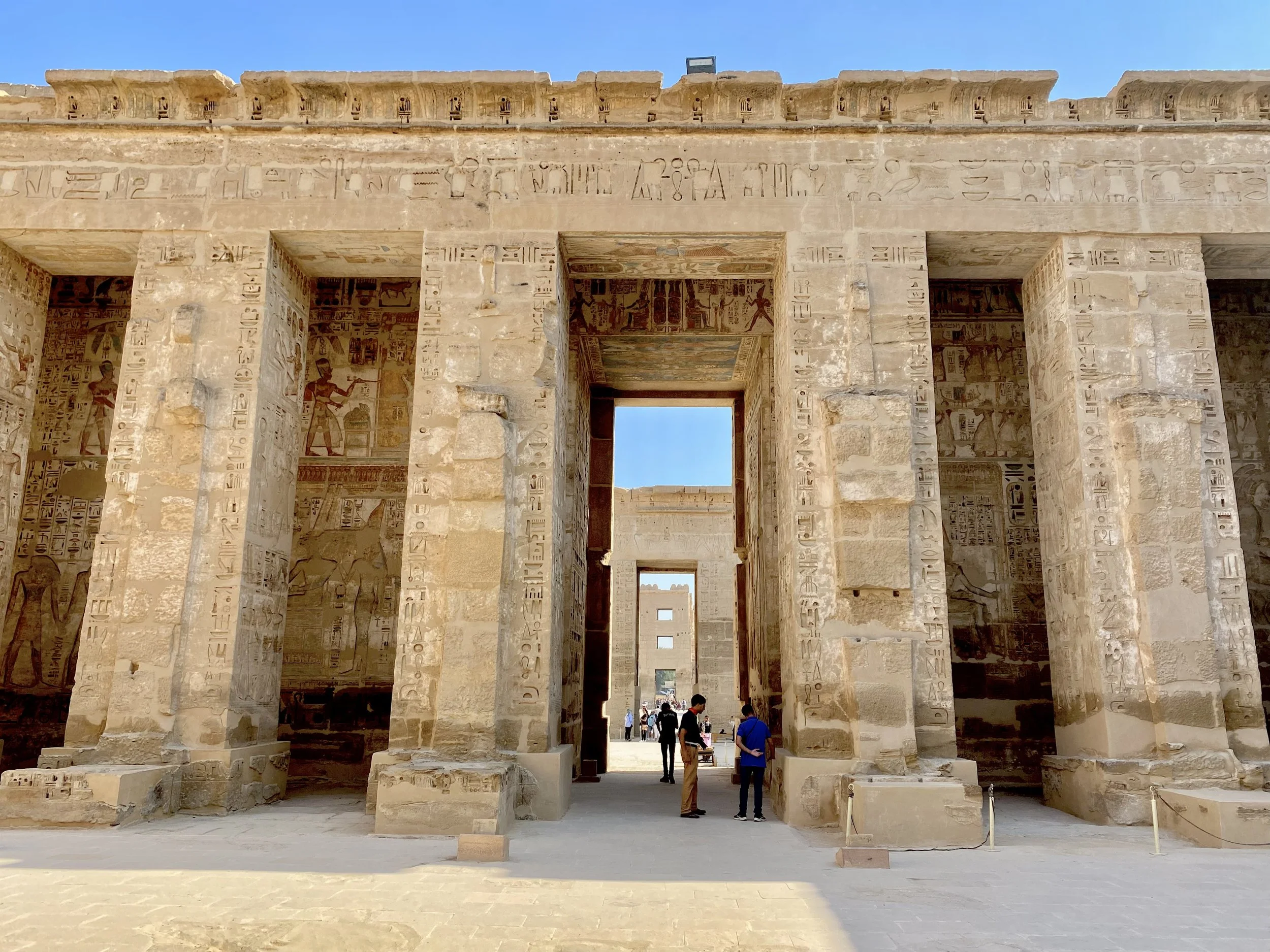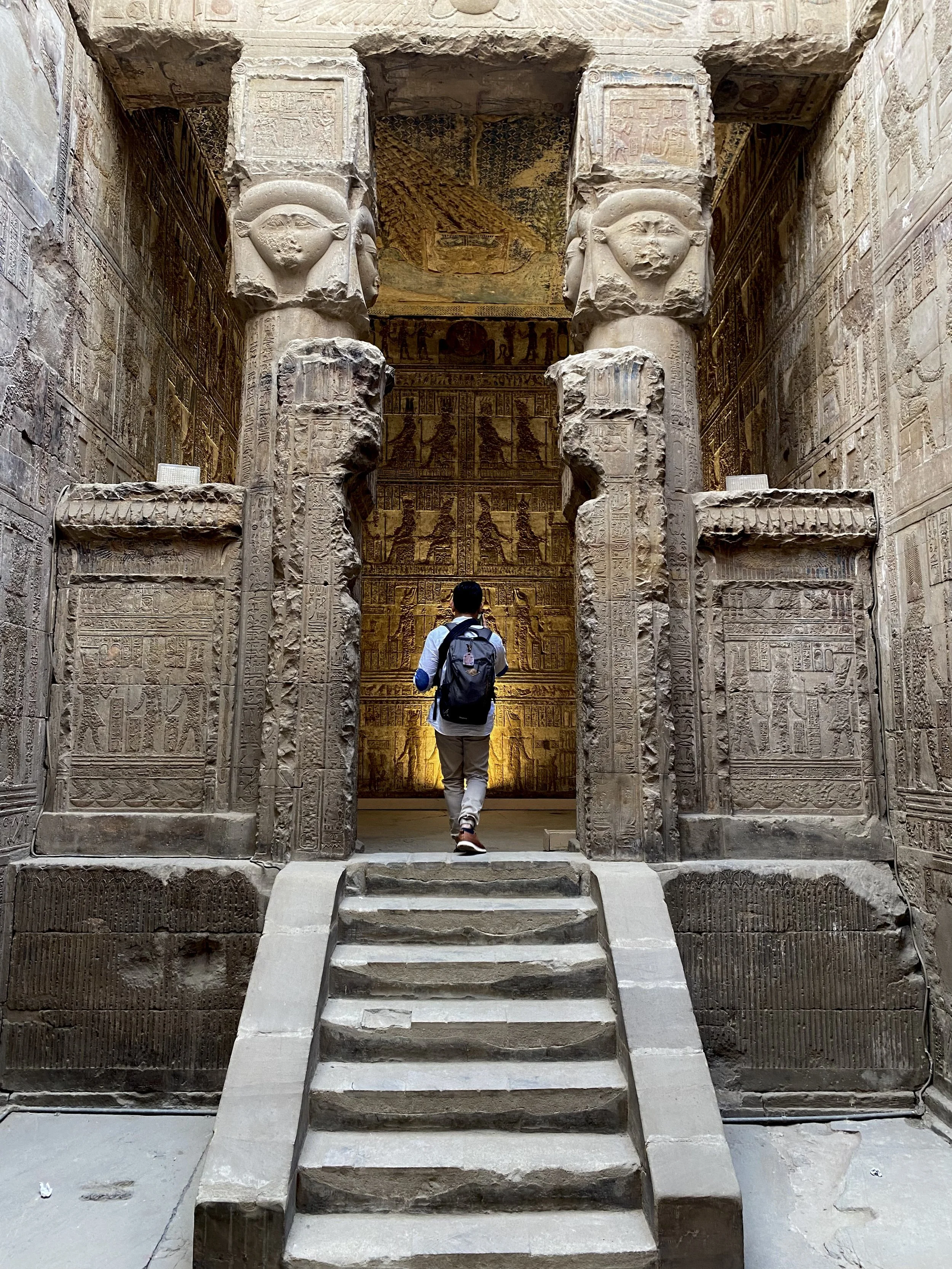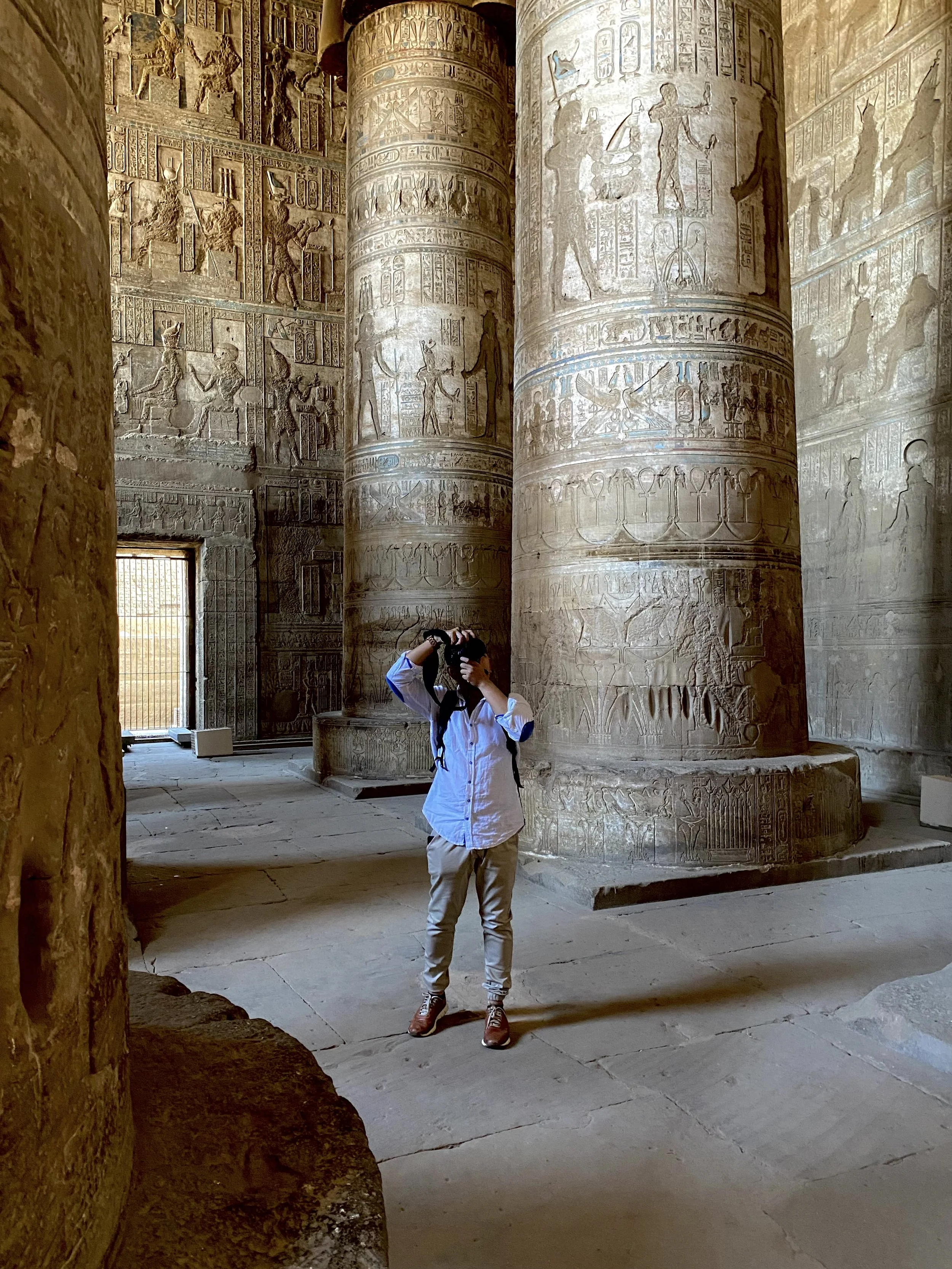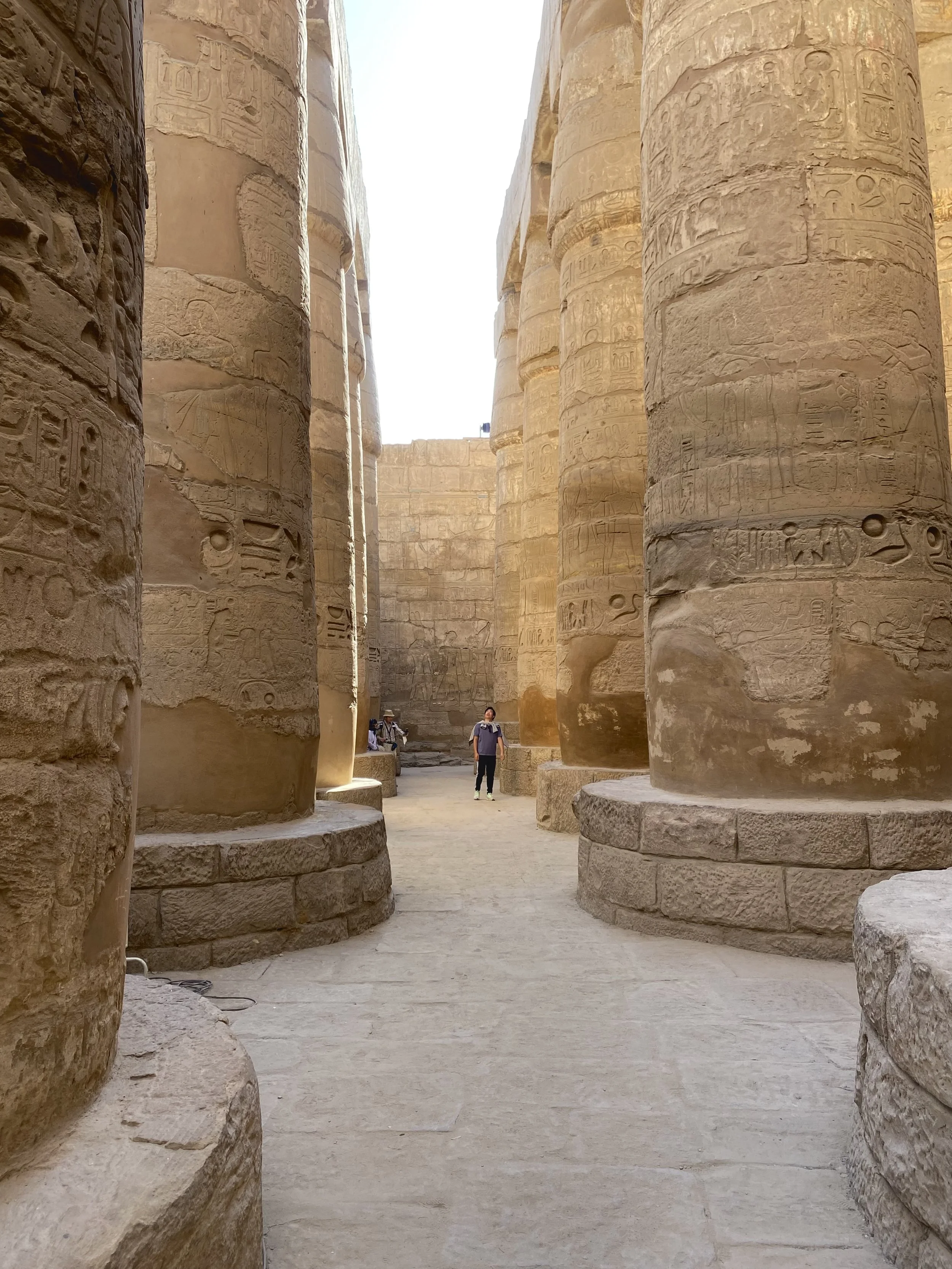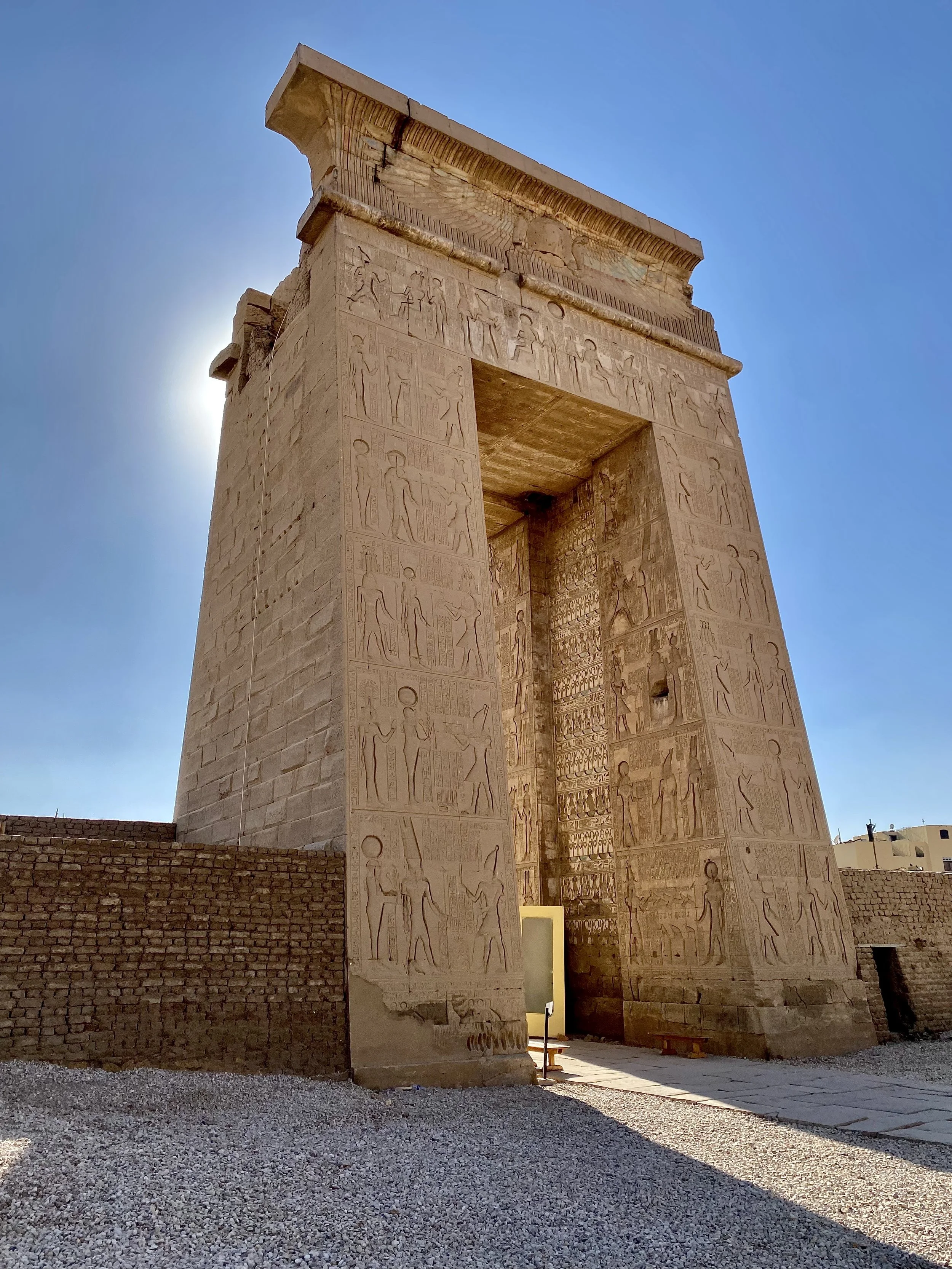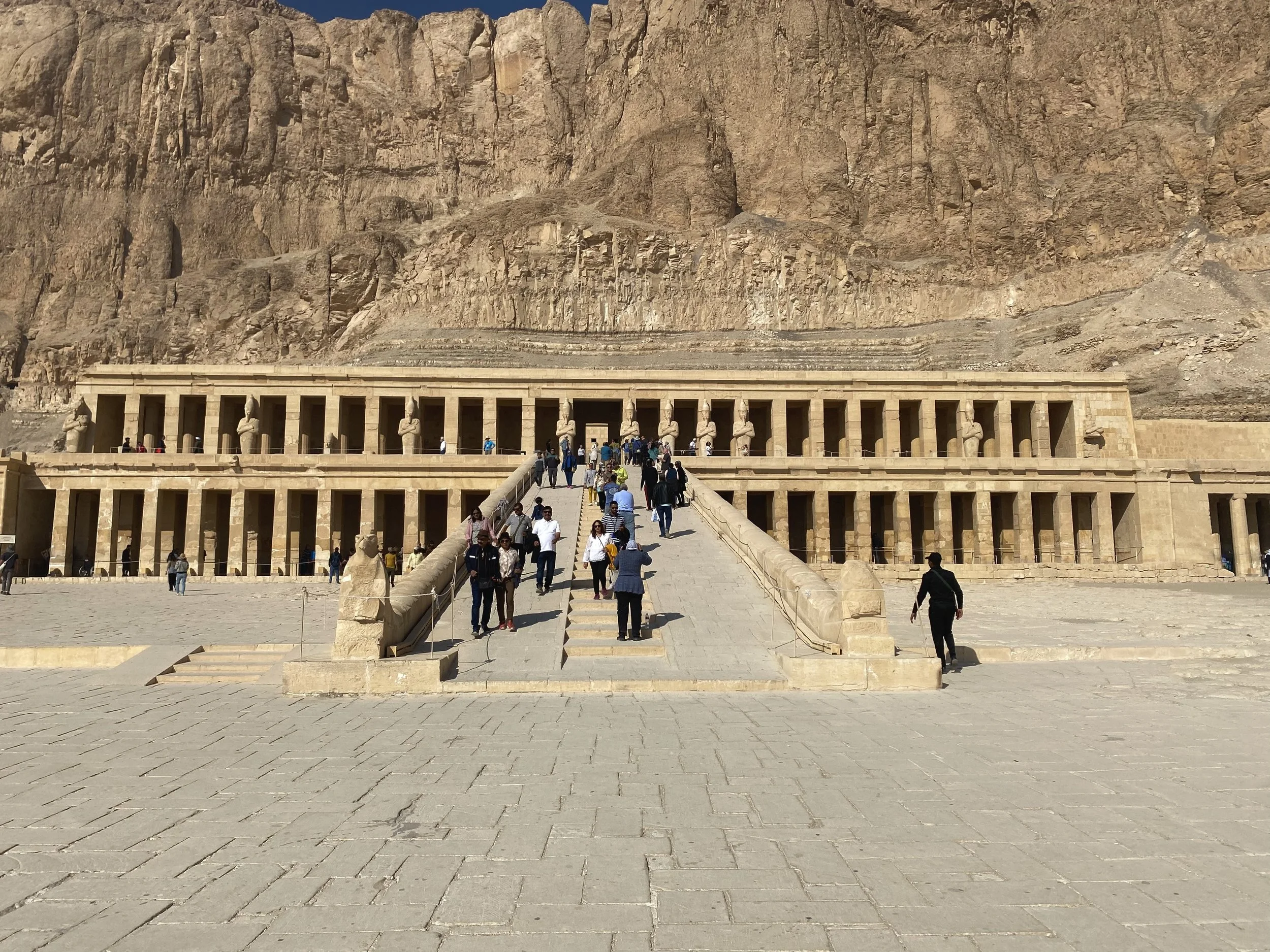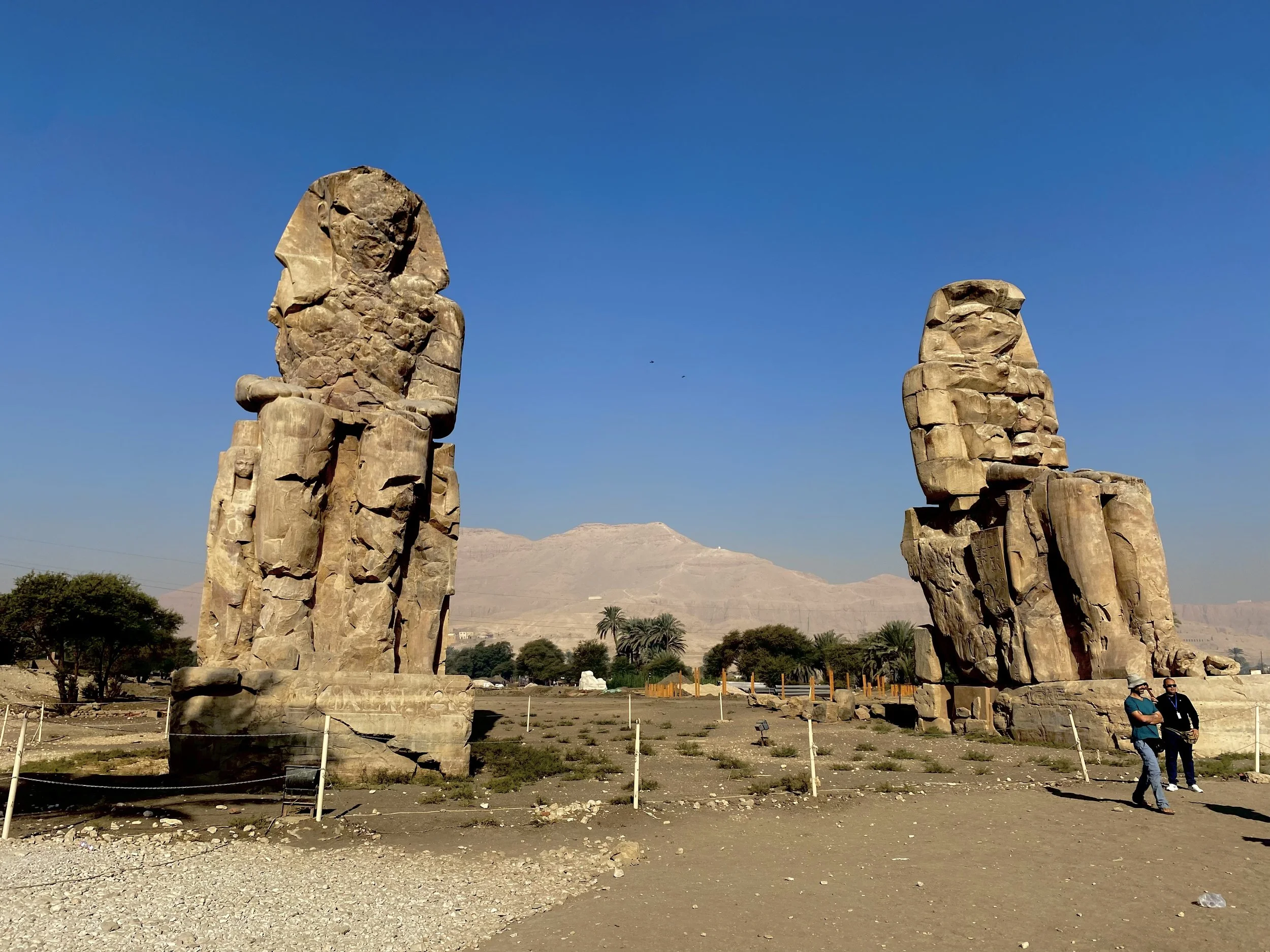Marvel at Ancient Egypt in Luxor
The Epicenter of Ancient Egyptian Sites
Luxor (ancient name Thebes) was the capital of Egypt from 1570 to 1069 BCE. Often called “the world’s greatest open-air museum,” the city is the epicenter of Ancient Egyptian heritage sites - including over 60 tombs of pharaohs, the second largest religious complex in the world, and an exquisite selection of smaller temples.
If anything, Luxor offers far much to do - and it’s easy to overburden your days and make it hard to fully savor the experience. I definitely visited too many sites - and would have preferred to visit fewer and stay longer. Below are the four sites that I think are absolutely must-dos - the places in Egypt that have stuck with me weeks later. At the end, I’ve also listed the other most commonly visited attractions.
My advice in Luxor is to limit yourself to two sites a day and to take your time. The level of detail at each place is incredible - and if you move slowly you will always be able to find something that inspires awe. If you want to see a lot of what the city offers, you’ll need at least four full days to explore, in my opinion.
Take in the Original Paintings at the Valley of the Kings
If there’s one must-do in Luxor, it is to visit The Valley of the Kings - a burial ground for pharaohs from the 18th, 19th, and 20th dynasties (the New Kingdom of Egypt). It’s an area of dessert on the West Bank with over 60 tombs - though only a handful are open at any given time. The amazing part of visiting is to see the decorations along the walls, pillars, and ceilings - including hieroglyphics, inscriptions and other art that are still vividly colorful with their original paint.
Your ticket will only get you into three tombs. My advice is to not only do the most popular ones (KV2, KV6, and KV11 - which will be identifiable by the swarms of tour groups at their doors) because they will be extremely cramped inside. If you go to at least one of the lesser visited tombs, you will be alone or nearly alone, and be able to take your time in admiring the artwork. My favorite was KV14 - which had particularly vivid yellow paintings.
In addition, there are three tombs that you can pay extra to enter. Whether or not to pay for them (which are all considered to offer something unique) is totally up to you and your budget. I don’t feel like I missed out for only exploring the tombs included in the primary ticket. If anything, because of the swarms of tourists, I was ready to leave after three tombs.
Enjoy the Inscriptions at Medinet Habu Temple
My favorite individual site in Luxor was the Medinet Habu Temple - a West Bank temple to Amun. The decorated columns and ceiling paintings here are exquisite - and the Temple Gates are famous for the inscriptions. The best part, in my opinion, is that it’s one of the least crowded sites in Luxor. This allows you plenty of space and time to really admire the carvings and colors.
Take a Day Trip to the Temple to hathor in Dendera
At the advice of a few other backpackers, I took a day trip to Dendera (about 90 minutes driving north of Luxor) to visit the Temple to Hathor - the protector of women and goddess of love, beauty, music, dancing, fertility, and pleasure. Without question, this was my absolute favorite site in Egypt.
First, it’s one of the lesser visited temples in Egypt, so odds are high you will often find yourself with the entire room to yourself - even the main entry. Second, the intricacy and preservations of both the carvings and the paintings are just exquisite - from the pillars to the walls to the ceilings. The entire temple took my breath away, and I could have easily spent an entire day there just admiring it.
And if you’re a photographer, this temple will feel like a real blessing for both the privacy and the number of good angles. My travel partner for this trip was an avid photographer - and we had a real blast making a photo shoot of the day.
Explore one of the World’s Largest Religious Complexes at Karnak
Karnak Temple on the north side of Luxor (east bank) is the second largest temple complex in the world (with Angkor Wat being number one). While it is the second most visited archaeological site in Egypt, I don’t think any given piece of the complex is among the most stunning temples in the country.
There are, however, several compelling reasons to visit. First, because it was built up over 2,000 years and across 30 pharaohs, there’s an enormous diversity in architecture and art styles throughout the complex - allowing you to see how Egyptian construction changed over time. Second, because of the sheer scale of the complex, you’ll get lots of time to explore in isolation, even though there will be tons of other tourists. Most visitors come on guided tours which only go through the main attractions (which are always crowded), so if you go off the beaten path then you’ll find yourself alone as often as not.
Other Things to Do
If anything, there is too much to do in Luxor - and it’s all amazing. My best advice is to limit yourself to two sites a day and to take your time exploring them. Anything else - and you’ll likely to overwhelm your senses and not be able to fully appreciate wherever you are. Here are some of the other most common things to do:
Explore the Tomb of a Female Pharoah: The only female tomb in (near, really) the Valley of the Kings is the Mortuary Temple of Hatshepsut - from the 15th century BCE. The tomb is one of a kind in architecture because of its three floors - and is most well known for the style that feels modern relative to other sites of its time.
Catch a Sunset at Luxor Temple: Dating from 1400 BCE, Luxor temple is the only major archaeological site within the center city of modern Luxor. Known for its enormous columns and large human statues, it was built as a place where kings were crowned. If you walk along the Nile near the Temple, you will be able to see it well from the outside because there is no wall blocking it - but if you want to go in and admire it more closely, you’ll have to pay for entrance. It’s a good place to watch the sunset - and it’s open late, so if you stay post sunset you’ll get to admire the temple in a new way with night lighting.
See More Tombs at Valley of the Queens: If you didn’t get enough tombs in Valley of the Kings, there are 90 more in The Valley of the Queens (where the wives were buried). Here, you’ll be able to explore with fewer tourists. You can also visit the most expensive single archaeological site of Egypt ($50) - The tomb of Queen Nefertari - which is known for its incredibly well preserved paintings. It will give you an idea of what the tombs looked like 3,000 years ago. While I couldn’t budget it, I heard the tomb is exquisite - and quiet.
Stop at the Collosi of Memnon: A free tourist attraction on the West Bank, you’ll almost certainly stop here if you are on a tour. These are two enormous (and heavily restored) stone statues of pharaohs. The remarkable things seeing them is knowing that the original pieces were made of a single block of stone.
Learn More about Ancient Egypt at a Museum: If you want to dig into the local history more, you can head over to the Luxor Museum or the Mummification Museum.
Take a Hot Air Balloon Ride: One of the most popular things to do in Luxor is to take a sunrise hot air balloon over the West Bank and the Valley of the Kings. This is another thing I couldn’t budget but that I heard was exquisite. Be prepared to leave around 4AM if you sign up.
See Even More Tombs at the Valley of the Artisans: Workers who built the tombs lived on the West Bank near the construction sites. The most prominent artisans were given their own tombs.
And Even More Tombs at the Valley of the Nobles: And if you didn’t get enough tombs yet, there’s yet another West Bank area offering tombs of the nobles.
Be picky in Luxor - or give yourself plenty of time. This is a city you could spend years in and still not be done exploring.

